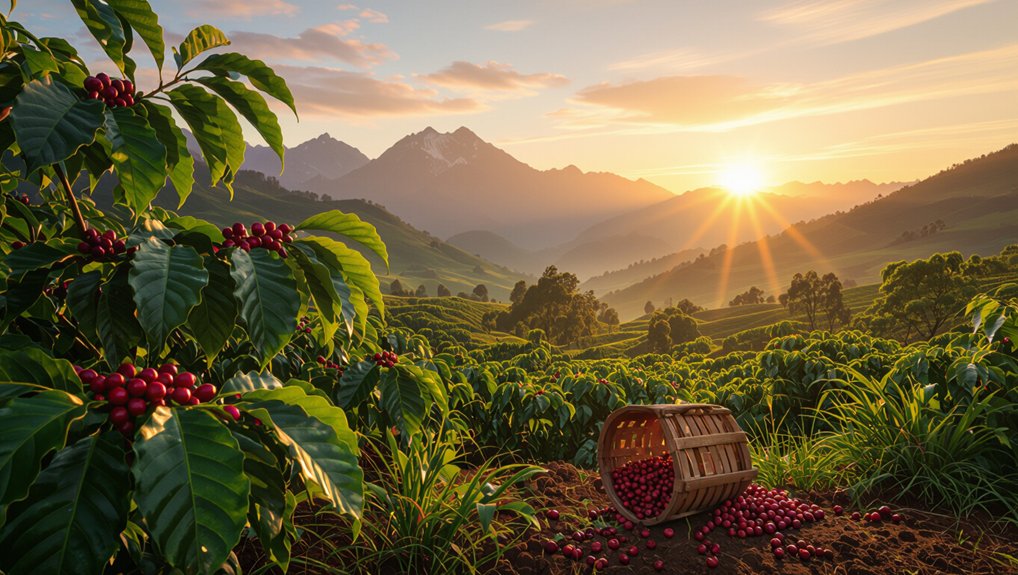Ever wondered what makes Peruvian coffee so special? You’re not alone. Coffee lovers everywhere are discovering that Peru produces some of the world’s most distinctive and flavorful beans, but many don’t understand what sets them apart from other origins or how to choose the best varieties.
Peru’s diverse geography creates perfect conditions for exceptional coffee cultivation. From the northern valleys of Piura to the misty mountains of Cusco, each region produces beans with unique characteristics that reflect their specific microclimates and growing conditions.
In this post, you’ll discover the origins of Peruvian coffee, explore the distinct taste profiles from different regions, and learn about the key varieties that make Peru a standout in the specialty coffee world. Whether you’re a casual coffee drinker or a serious enthusiast, you’ll gain the knowledge to appreciate and select the perfect Peruvian coffee for your palate.
Table of Contents
The Historical Journey of Peruvian Coffee
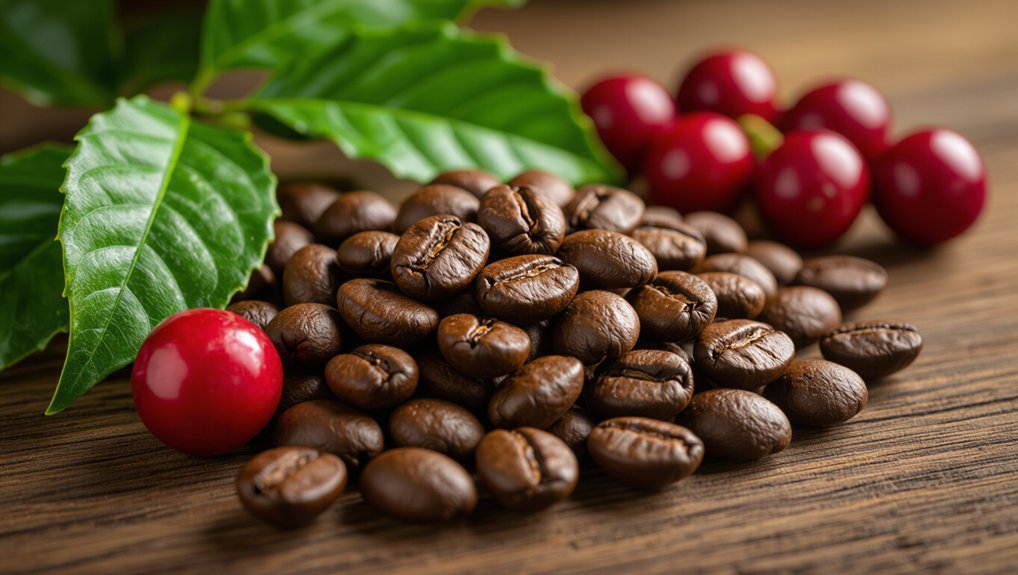
Although coffee might seem like a modern Peruvian staple, its roots stretch back centuries to the mid-1700s when local farmers first began cultivating these remarkable beans.
Initially focused on local consumption, Peru’s coffee production transformed dramatically during the late 1800s when European markets sought alternatives during a coffee rust outbreak. By World War I, coffee became a critical export, representing up to 60% of the country’s international trade.
The journey wasn’t always smooth. Small Peruvian coffee plantations weathered challenges, gradually developing resilient Arabica coffee varieties that would define their organic coffee legacy.
Coffee Growing Regions in Peru
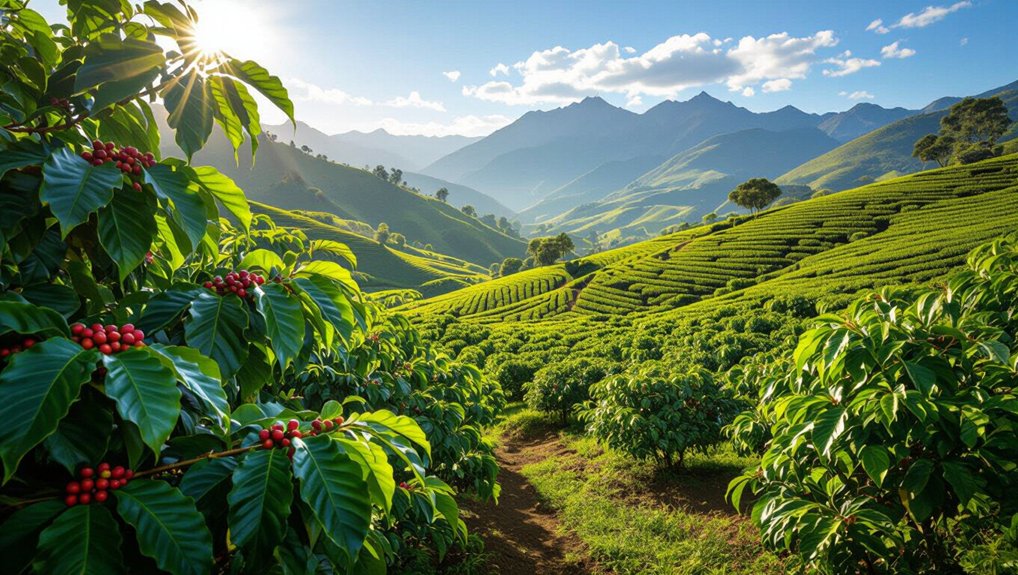
Peru’s coffee landscape is a vibrant tapestry of microclimates and elevations, each region painting its own unique flavor profile across the country’s verdant slopes.
The diversity of coffee-growing regions offers an incredible journey through taste and terroir.
- Northern regions like Piura and Cajamarca produce sweet coffees with chocolate and caramel notes, perfect for those seeking rich, complex flavors.
- Central Peru’s Huánuco and Junin showcase specialty coffees with vibrant acidity and tropical fruit undertones.
- Southern regions such as Cusco and Ayacucho deliver high-quality organic coffees with exceptional medium acidity and juicy fruit characteristics.
These microclimates create a stunning mosaic of Peruvian coffee experiences.
Flavor Profiles and Taste Characteristics

A symphony of flavors awaits coffee enthusiasts exploring Peruvian coffee, where each sip tells a rich story of altitude, soil, and craft.
From northern regions with chocolate and caramel notes to southern landscapes bursting with tropical fruit flavors, these specialty-grade beans showcase incredible diversity.
You’ll discover bright acidity and floral aromas in high-altitude coffees, particularly from Cusco, while lower elevations offer smooth, nutty characteristics.
Puno’s beans tantalize with passion fruit and pineapple undertones, balanced by sweet molasses hints.
The medium body and complex taste profiles reflect Peru’s remarkable terroir, making each cup a unique sensory journey through the country’s diverse microclimates.
Sustainable Farming and Fair Trade Practices
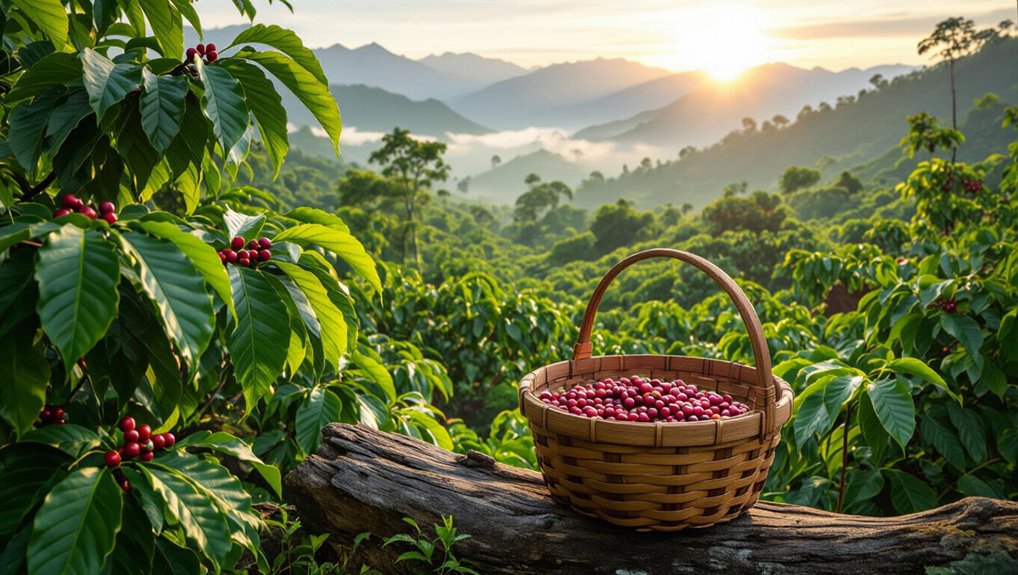
The flavor complexity we just explored finds its roots not just in Peru’s diverse landscapes, but in the country’s commitment to ethical coffee production.
Sustainable farming and fair trade practices have transformed the coffee industry, empowering smallholder farmers through innovative approaches.
- Coffee cooperatives provide market access and technical support, helping farmers implement eco-friendly methods
- Organic production ensures pure, high-quality beans while protecting environmental resources
- Women’s cooperatives promote gender equity, giving female farmers fair pricing and economic opportunities
These practices aren’t just about coffee—they’re about building sustainable communities and preserving Peru’s rich agricultural heritage.
Unique Coffee Varieties and Processing Methods

How do some coffee varieties become legendary? In Peru, unique processing methods elevate coffee to extraordinary heights.
You’ll discover Capis, processed through coatis, and Uchuñari, where coati excrement transforms beans into a globally celebrated experience.
The Chanchamayo region produces organic, medium-bodied coffee with bright acidity, while Urubamba beans offer smooth, wet-processed perfection.
Coffee Quechua from Puno boasts multiple awards, showcasing the exceptional quality of Peruvian coffee.
These distinctive varieties demonstrate how innovative processing and regional terroir create truly remarkable coffee experiences that coffee lovers can’t resist.
Challenges and Future of Peruvian Coffee Production

While Peruvian coffee’s unique processing methods showcase incredible potential, stark realities threaten the industry’s future sustainability. Challenges in Peru’s coffee-growing regions are mounting, with climate change and infrastructure limitations testing smallholders’ resilience.
Key challenges include:
- Unpredictable rainfall disrupting crop yields and quality
- Poor transportation infrastructure preventing efficient market access
- Economic pressures driving farmers toward alternative income sources
Specialty coffee production offers a glimmer of hope. By focusing on high-quality varieties and investing in processing improvements, Peruvian coffee farmers can enhance their competitiveness and secure a more sustainable future in the global market.
Economic Impact of Coffee in Peru
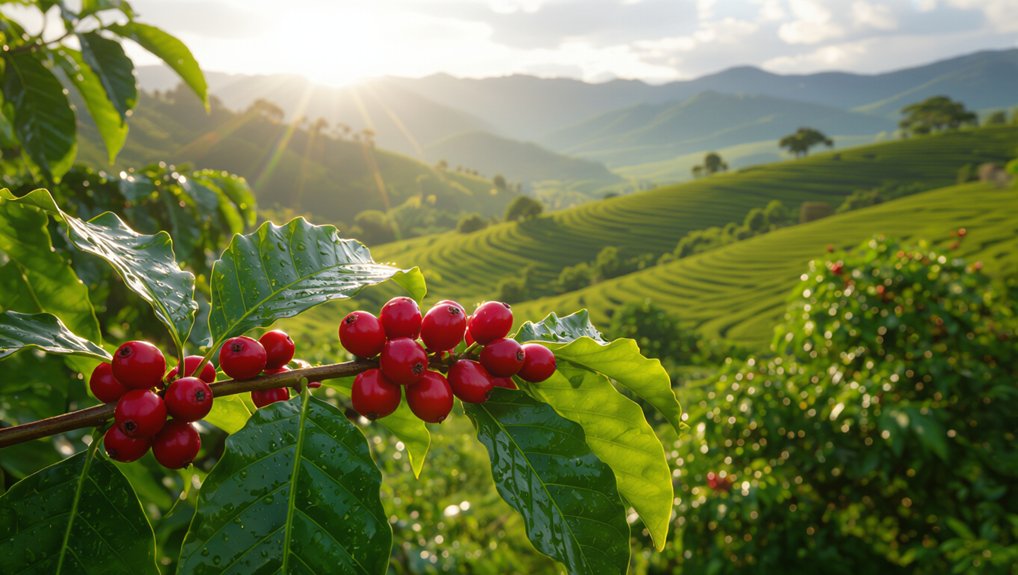
Because coffee represents more than just a beverage in Peru, its economic significance reverberates through countless rural communities and national agricultural systems.
You’ll find that coffee provides income to roughly 223,000 families, with most farmers managing small three-hectare coffee farms.
As an agricultural export, coffee ranks second in national value, highlighting its critical economic importance.
Small producers are increasingly shifting towards specialty coffee, prioritizing quality over quantity to combat global price challenges.
This strategic pivot helps improve income stability and creates opportunities for farmers to differentiate themselves in a competitive global market.
Frequently Asked Questions
What Is the Flavor Profile of Peruvian Coffee?
I’ll tell you, Peruvian coffee offers a bright, tangy experience with chocolate, caramel, and fruity notes. From high-altitude regions, it’s a vibrant brew with sparkling flavors and a clean, medium-bodied character that’ll delight your palate.
What Makes Peruvian Coffee Different?
I’ll highlight Peru’s coffee uniqueness through its diverse altitude-driven flavors, eco-friendly farming techniques, and distinctive processing methods that create vibrant, complex coffees with bright acidity and exceptional regional variations from north to south.
Which Peruvian Coffee Is the Best in the World?
I’d say Uchuñari coffee reigns supreme, with its unique processing through coati excrement creating an unparalleled flavor profile. Its global recognition and distinctive taste make it the crown jewel of Peruvian coffee varieties.
What Is Peru Coffee Classification?
I’ll classify Peru’s coffee by altitude, region, varietal, and certification. From Cajamarca’s high-grown Typica to organic Fair Trade beans, each classification reveals unique flavor profiles that showcase the incredible diversity of Peruvian coffee landscapes.
Conclusion
Peruvian coffee isn’t just a product of fertile soil and high-altitude climates—it’s the result of centuries of heritage, innovation, and community resilience. From the sun-drenched valleys of Piura to the cool, misty peaks of Cusco, every bean carries the essence of its region and the care of the hands that cultivated it.
Whether you’re drawn to its chocolatey depth, fruity brightness, or its ethical backbone rooted in sustainable and fair trade practices, Peruvian coffee offers something truly special for every kind of coffee lover.
As the country navigates modern challenges, its commitment to quality, culture, and community ensures that Peru will continue to be a powerful force in the world of specialty coffee—one flavorful, aromatic cup at a time.

